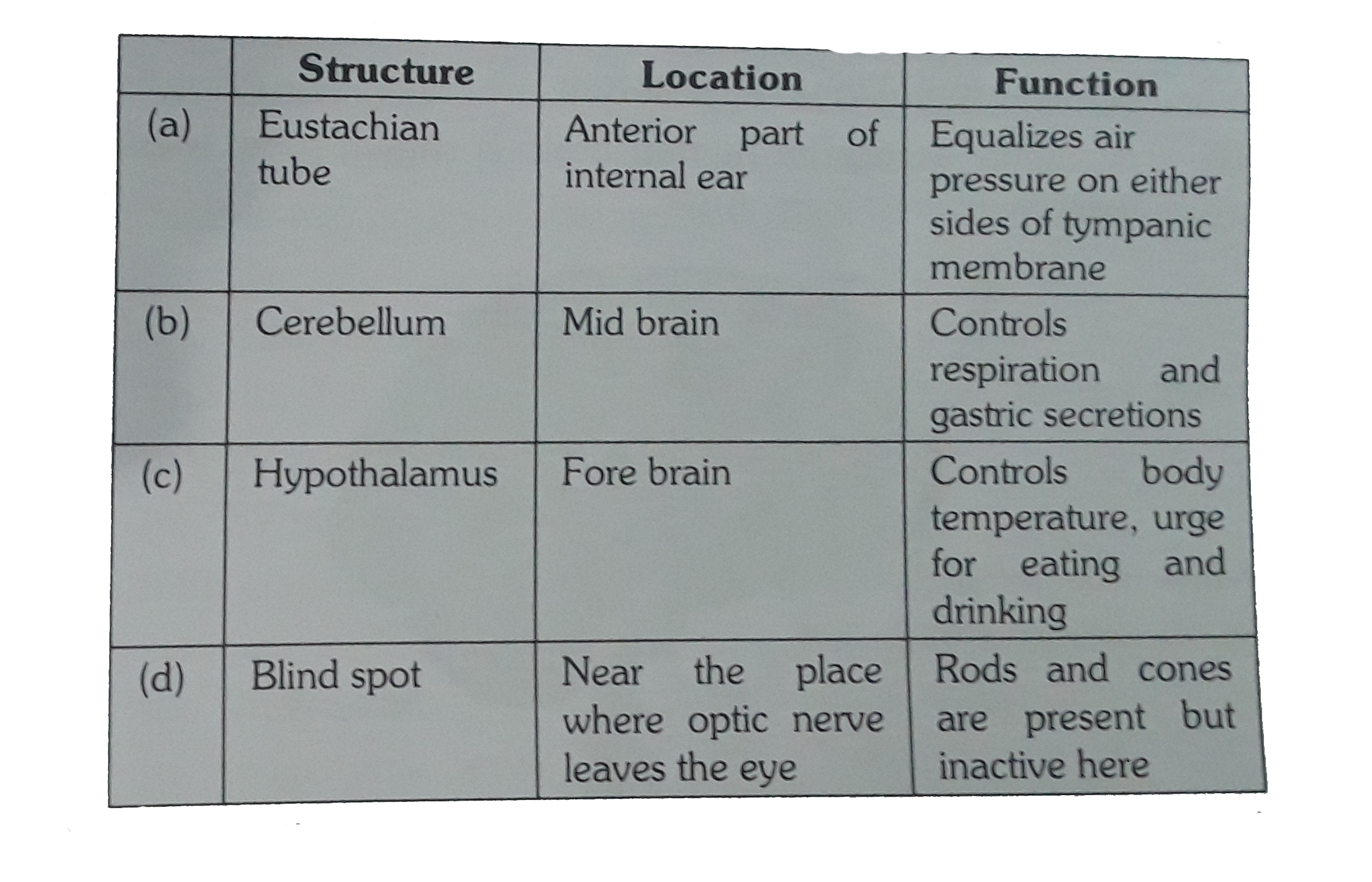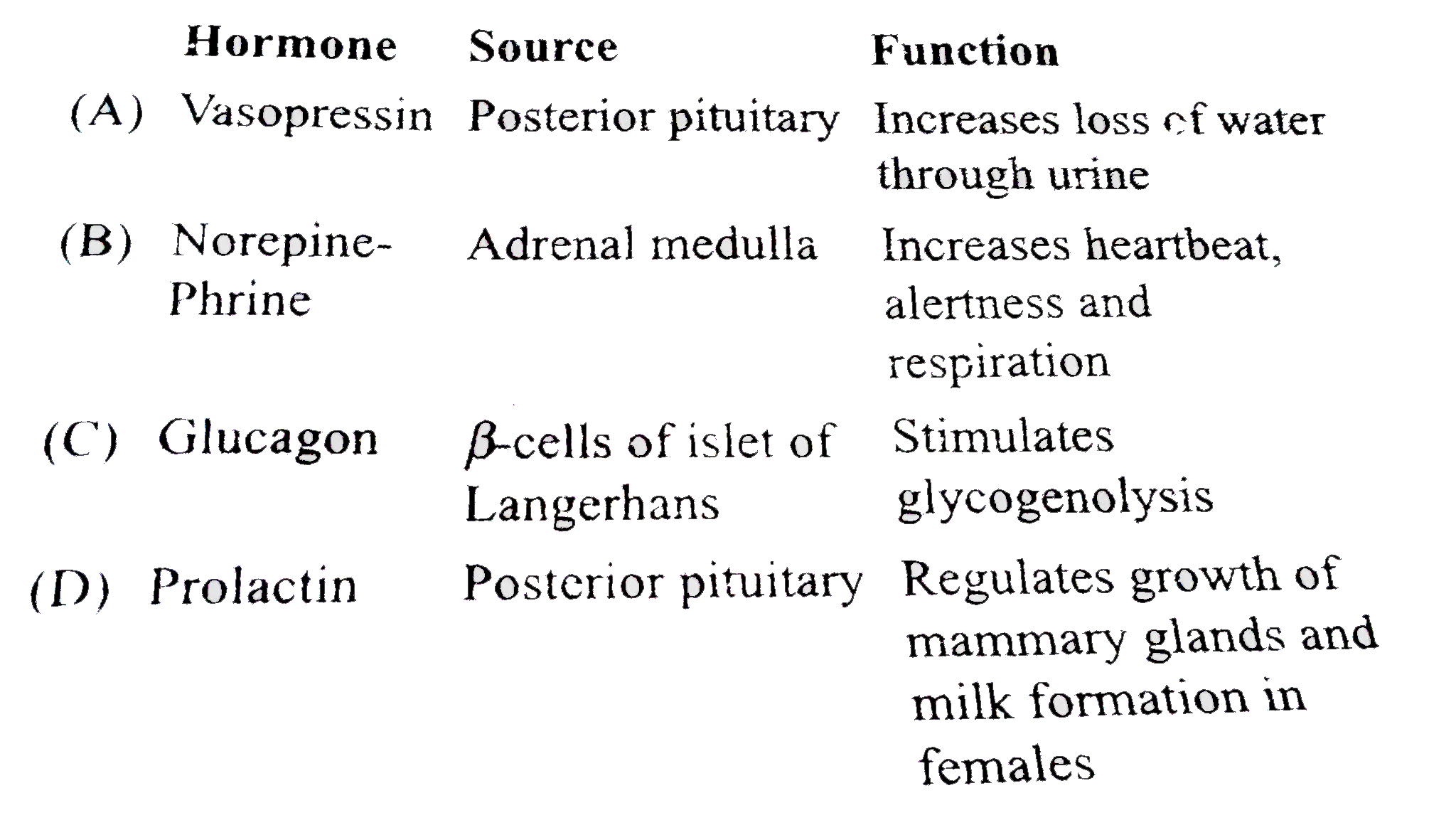Select the answer with correct matching of cranial nerve, its nature, origin and functions
cranial nerve - Trigemial, Nature - Motor, Origin - Floor of mid brain, Function - Skin sensation, Tongue movement
cranial nerve - Occulomotor, Nature - Motor, Origin - Floor of midbrain, Functions - Movement of eyeball and power of accommodation
cranial nerve - Abducens, Nature - Sensory, Origin - Pons, Functions - Movement of eyeball and power of accommodation
cranial nerve - Hypoglossal, Nature - Motor, Origin - Pons, Functions - Swallowing and salivation
To solve the question regarding the correct matching of cranial nerves, their nature, origin, and functions, we will analyze the options provided for each cranial nerve mentioned in the video transcript.
1. Identify the Cranial Nerves: The cranial nerves mentioned are Trigeminal, Oculomotor, Abducens, and Hypoglossal.
2. Analyze Trigeminal Nerve:
- Nature: Mixed (both motor and sensory)
- Origin: Pons (not the floor of the midbrain)
- Functions: Sensation from the face and motor functions for chewing.
- Conclusion: The provided information about Trigeminal is incorrect.
3. Analyze Oculomotor Nerve:
- Nature: Primarily motor
- Origin: Midbrain (correct)
- Functions: Eye movement and pupil constriction.
- Conclusion: The information about Oculomotor is partially correct but does not match the provided option.
4. Analyze Abducens Nerve:
- Nature: Primarily motor
- Origin: Pons (correct)
- Functions: Movement of the lateral rectus muscle of the eye.
- Conclusion: The provided information about Abducens is incorrect as it is not sensory.
5. Analyze Hypoglossal Nerve:
- Nature: Primarily motor
- Origin: Medulla oblongata (not pons)
- Functions: Tongue movement.
- Conclusion: The provided information about Hypoglossal is incorrect.
6. Final Evaluation: After analyzing all the options, none of the provided descriptions for the cranial nerves are correct. The only correct aspect is that the Oculomotor nerve originates from the midbrain and is primarily motor, but the other descriptions are incorrect.
Conclusion:
Based on the analysis, the correct answer is that none of the options provided are fully accurate. However, if we are to select the option that is closest to being correct, it would be the one related to the Oculomotor nerve.
- Nature: Mixed (both motor and sensory)
- Origin: Pons (not the floor of the midbrain)
- Functions: Sensation from the face and motor functions for chewing.
- Conclusion: The provided information about Trigeminal is incorrect.
- Nature: Primarily motor
- Origin: Midbrain (correct)
- Functions: Eye movement and pupil constriction.
- Conclusion: The information about Oculomotor is partially correct but does not match the provided option.
- Nature: Primarily motor
- Origin: Pons (correct)
- Functions: Movement of the lateral rectus muscle of the eye.
- Conclusion: The provided information about Abducens is incorrect as it is not sensory.
- Nature: Primarily motor
- Origin: Medulla oblongata (not pons)
- Functions: Tongue movement.
- Conclusion: The provided information about Hypoglossal is incorrect.
Based on the analysis, the correct answer is that none of the options provided are fully accurate. However, if we are to select the option that is closest to being correct, it would be the one related to the Oculomotor nerve.
Topper's Solved these Questions
Similar Questions
Knowledge Check
Select the answer with correct matching of the structure, its location and function:
 AStructureLocationFunctionEustachian tubeAnterior part of internal earEqualises air pressure on either sides of tympanic membraneBStructureLocationFunctionCerebellumMidbrainControls respiration and gastric secretionsCStructureLocationFunctionHypothalamusForebrainControls body temperature, urge for eating and drinkingDStructureLocationFunctionBlind spotNear the place where optic nerve leaves the eye Rods and cones are present but inactive here
AStructureLocationFunctionEustachian tubeAnterior part of internal earEqualises air pressure on either sides of tympanic membraneBStructureLocationFunctionCerebellumMidbrainControls respiration and gastric secretionsCStructureLocationFunctionHypothalamusForebrainControls body temperature, urge for eating and drinkingDStructureLocationFunctionBlind spotNear the place where optic nerve leaves the eye Rods and cones are present but inactive hereSelect the answer with correct matching of the structure, its location and function
 AStructureLocationFunctionEustachian tubeAnterior part of internal earEqualises air pressure on either sides of tympanic membraneBStructureLocationFunctionCerebellumMidbrainControls respiration and gastric secretionsCStructureLocationFunctionHypothalamusForebrainControls body temperature, urge for eating and drinkingDStructureLocationFunctionBlind spotNear the place where optic nerve leaves the eye Rods and cones are present but inactive here
AStructureLocationFunctionEustachian tubeAnterior part of internal earEqualises air pressure on either sides of tympanic membraneBStructureLocationFunctionCerebellumMidbrainControls respiration and gastric secretionsCStructureLocationFunctionHypothalamusForebrainControls body temperature, urge for eating and drinkingDStructureLocationFunctionBlind spotNear the place where optic nerve leaves the eye Rods and cones are present but inactive hereSelect the answer with correct matching of the stucture its location and function
AStructureLocatonFunctionEustachianAnterior part of internal earEqualises air pressure on either sides of tympanic membraneBStructureLocatonFunctionCerebellumMidbrainControls respiration adn gastric secretionsCStructureLocatonFunctionHypothalamusForebrainControls body temperature, urge for eating and drinkingDStructureLocatonFunctionBlind spotNear the place where optic nerve leaves the eyeRods and cones are present but inactive here
Select the correct matching of hormone, its source and function.

View SolutionSelect the correct match of an animal, its characteristics and taxon
View SolutionMark the correct matching regarding the hormone chemical nature and function :
View SolutionSelect the correct match of endocrine gland, its hormone and its function
View SolutionSelect the correct matching pair of a hormone alongwith its source and function
View Solution

